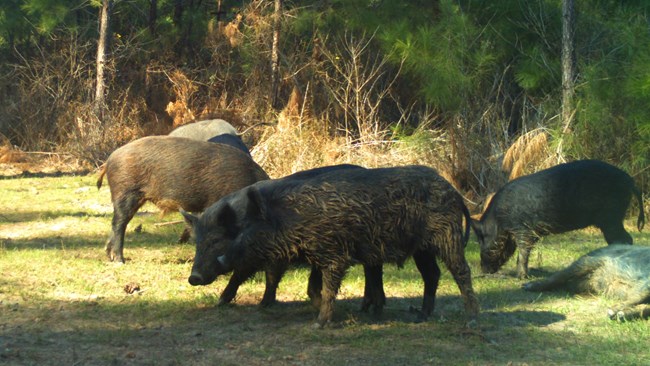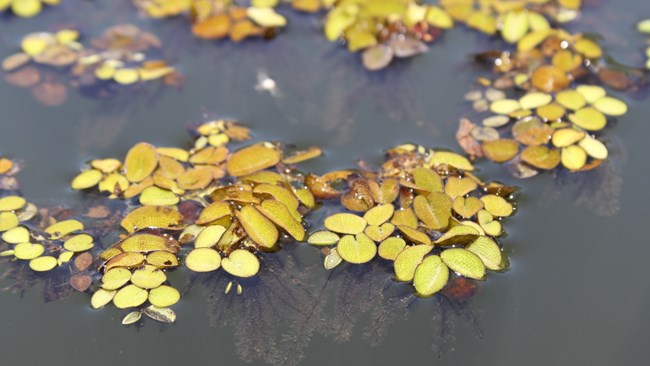|
Nonnative, or exotic, species are those that are native to another areas but move into new areas, usually with some help from humans. They often cause negative impacts to native species, and in severe cases, to entire ecosystems. Big Thicket National Preserve has documented several nonnative species of animals and plants in the preserve, including fire ants and many plant species. By far the most problematic invasive animal species in the preserve is the feral hog. 
NPS Photo Feral HogsFeral hogs are one of the most destructive nonnative animals found in the preserve, both in terms of their raw habitat-altering impact and the challenges to control them. The term “feral hog” applies to domestic hogs that were released or escaped to the wild, Eurasian wild boars introduced for sport hunting, and hybrids of the two. Brought to the United States by early explorers and settlers and first introduced to Texas in the 1680s, feral hog numbers have increased dramatically in the past decade. An estimated 2-3 million feral hogs range over the state of Texas. Feral Cats and DogsStray or abandoned cats and dogs are also of concern in Big Thicket National Preserve. They may compete with native animals for food resources, or starve due to lack of hunting skills. Cats can be extremely efficient killers of birds, lizards, rabbits, and small rodents. Some feral animals may become aggressive toward humans. All of these factors are problematic for preserve visitors, preserve wildlife, and the stray animals themselves. 
NPS Photo PlantsInvasive plants are among the greatest threats to the ecological integrity of the Big Thicket. The highly fragmented nature of the preserve, crossed by numerous pipelines, road corridors, and waterways, as well as the potential for invasive weed seeds to come from neighboring private lands, nearby urban areas, and from oil & gas production pads all have allowed several invasive plant species to gain a foothold in the preserve. |
Last updated: October 17, 2022
